Last year my husband came home panicking about the ‘bugs’ all over our plum tree. We only have room for one fruit tree, so any chance that we may not get to eat all those amazing Italian prune plums is reason to panic. But I was aware of these “bugs” (aphids) and I had actually been allowing them to multiply in my very own little aphid nursery. Why on earth would I ever WANT aphids, the tiny soft-bodied flies that suck all the precious juices from your plants? Well, because they attract beneficial insects to the garden. I was growing food for the good bugs!
Setting up an area of your garden or a plant placed somewhere strategically where pests are allowed will help to attract beneficial insects such as ladybugs, spiders, hoverflies and parasitic wasps to find their way to your garden. I plant a few shasta daisies (for black aphids) and lupines (for green aphids) around the garden as ground nurseries because aphids love them. A colony of the little monsters will cover those flowers and in no time the whole garden is being trolled by aphid hunters. This is particularly helpful near my lettuce garden, as the parasitic wasps and hoverflies zip in and between the lettuce leaves, effectively cleaning my greens before I even pick them.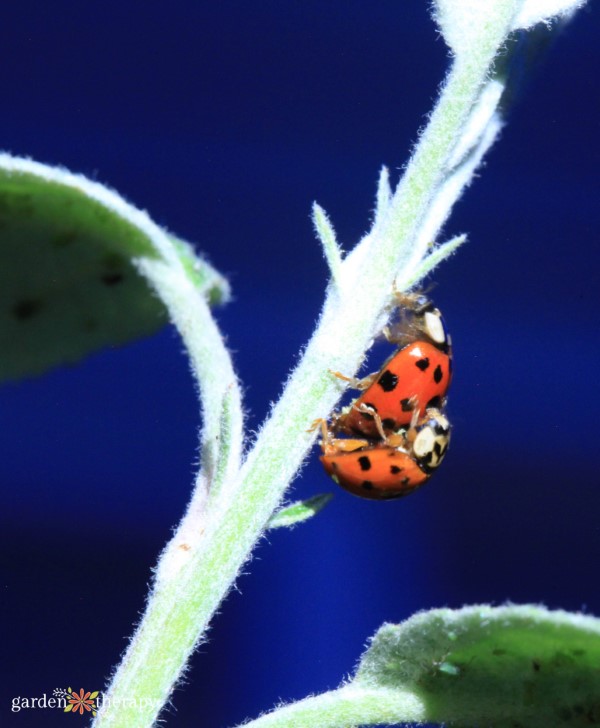
The aphids on my plum tree, however, don’t even get a chance to touch a leaf of plum because once the ladybug eggs hatch it’s covered with alligator-like larvae that can eat hundreds of aphids a day.
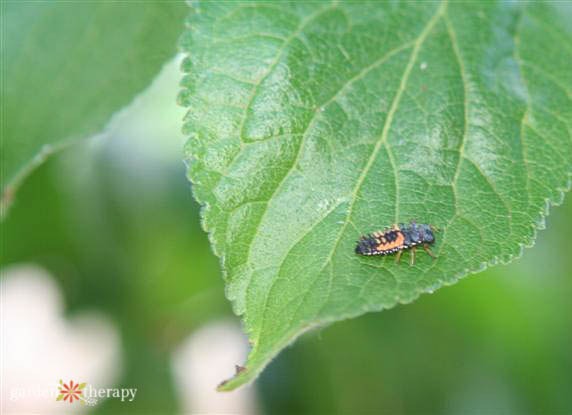
By the time they pupate and become the beetles we are all familiar with, they have spit shined my plum tree without a sign of a pest. And, of course, my plum would never even set fruit if it wasn’t for pollinators so I make sure there are lots of flowers for the bees as well.
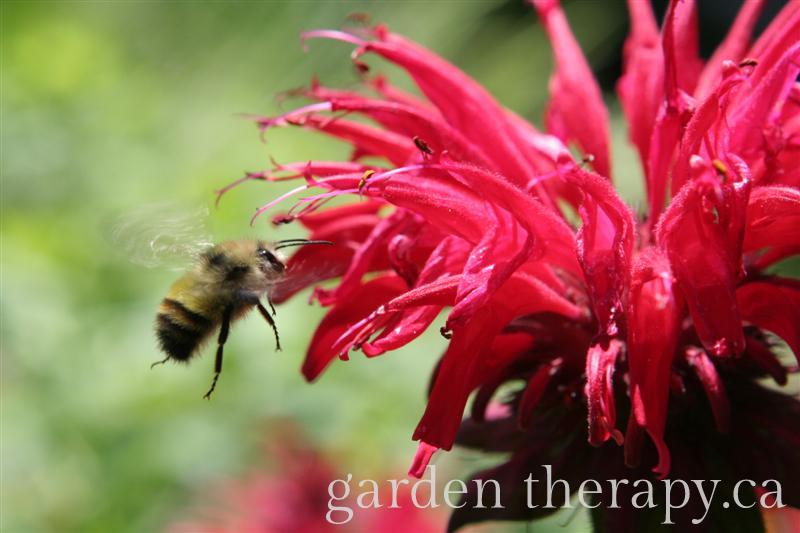
Beneficial Insects (you want) in the Garden
- Ladybugs
- Lacewings
- Bees
- Ground beetles
- Minute pirate bugs
- Earwigs
- Big-eyed bugs
- Assassin bugs
- Damsel bugs
- Mealybug destroyers
- Soldier beetles
- Praying mantis
- Aphid midges
- Parasitic wasps
- Spiders
- Tachinid flies
- Syrphid flies (hoverflies)
Plan Your Garden to Have 3 Things for Beneficial Insects
1. Nectar provides beneficial insects with sugar. A few great sources are carrots, fennel, and Alyssum. Plant them and let them bloom.
2. Pollen provides protein for the good guys. Plant pollen-rich Asteraceae family of plants (asters, daisies) and Echinacea.
3. Trap plants like nasturtiums, lupines, and shasta daisies will attract insects that the beneficials feed on. Can you see what the ladybug in this photo is hunting?
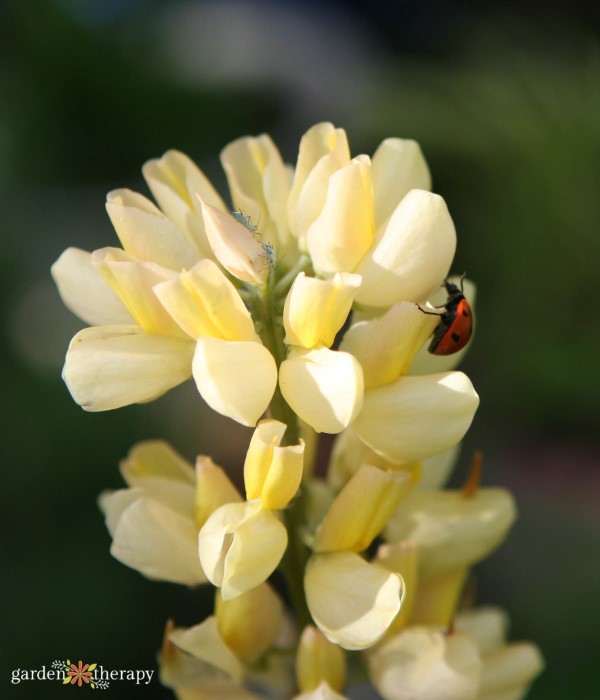
The lesson here in organic gardening is to do what you can to help nature take care of the problem. Plant flowers for pollinators, start an aphid nursery, and give beneficial insects a few extra weeks to arrive before you attack pests on your plants. If it becomes a fight and you are not winning, then perhaps it’s time to considering making a change to what and where you plant. Gardening should be about nurturing, not napalm.
More on Natural Pest Management
- These Powerful Flowers Deter Pests Naturally in the Vegetable Garden
- How to Prevent, Identify, and Get Rid of 8 Common Houseplant Pests
- Mix Herbs and Vegetables in the Garden to Deter Pests Naturally
- Oh, Rats! How to Solve Compost Bin Pest Problems for Good
- Prevent and Get Rid of Annoying Fungus Gnats, Naturally
- The Beneficial Insect Super 7: Important Natural Enemies on Patrol in Your Garden
- Totally Organic Ways of Getting Rid of Pests in the Garden
- How to Make a Quick and Easy Fruit Fly Trap
- Build a Bug Hotel
- Bee a Good Garden Host: Make a Bee Bath

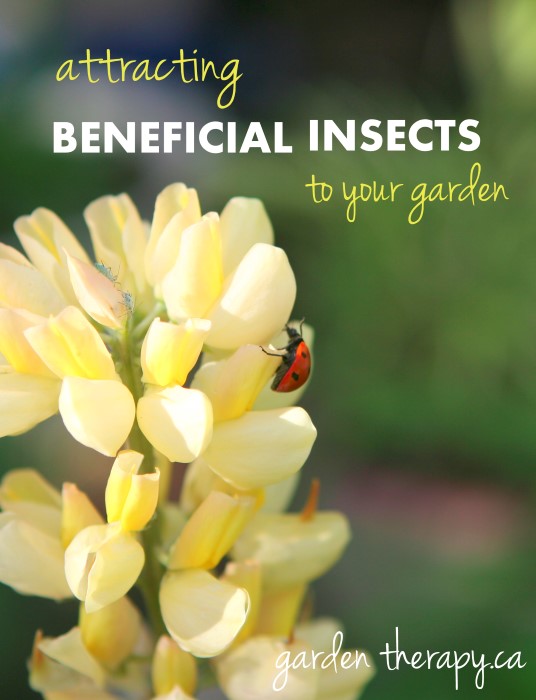



I’m curious why you think earwigs are beneficial insects. They eat the heck out of my plants every year. They, along with wonderful slugs, survive thru our snowy winters in Southwest Colorado.
Hi D, not every bug is clearly “bad” or “good”. earwigs are predatory and eat lots of aphids, mites, slugs, and insects eggs. They are also great at helping clean up and break down garden soil. So it’s a balance. If they are doing more damage than good, then trap and remove them to bring down the population. Ideally, you would have some of them but not enough to damage the plants past repair. A high number is not an earwig infestation per se, as much as a earwig predator deficiency, that will help to keep the population in control for you.
Hello! This is a wonderful article, it’s great to see posts regarding the positive roles of these ‘pests’ in the garden and wider environment. Invertebrates are struggling so much with climate change and really underpin so many important natural processes in the world, and provide food for many other animals.
I see you refer to aphids as “bugs”, and I thought you might be interested to know that whilst you’re right to be cautious of the term in application to any insect, aphids do actually belong to the true bugs of the insect world, the needle-nosed sap-sucking order Hemiptera! Many plant pests are in this group.
Yes, it’s a tricky one because “bug” is used as the common word for the grouping of many critters including spiders and mosquitoes. Just like “vegetable” is used for foods that are technically a fruit like pumpkins and tomatoes. Thankfully, these discussions help us get to know our garden friends even better. I appreciate the comment.